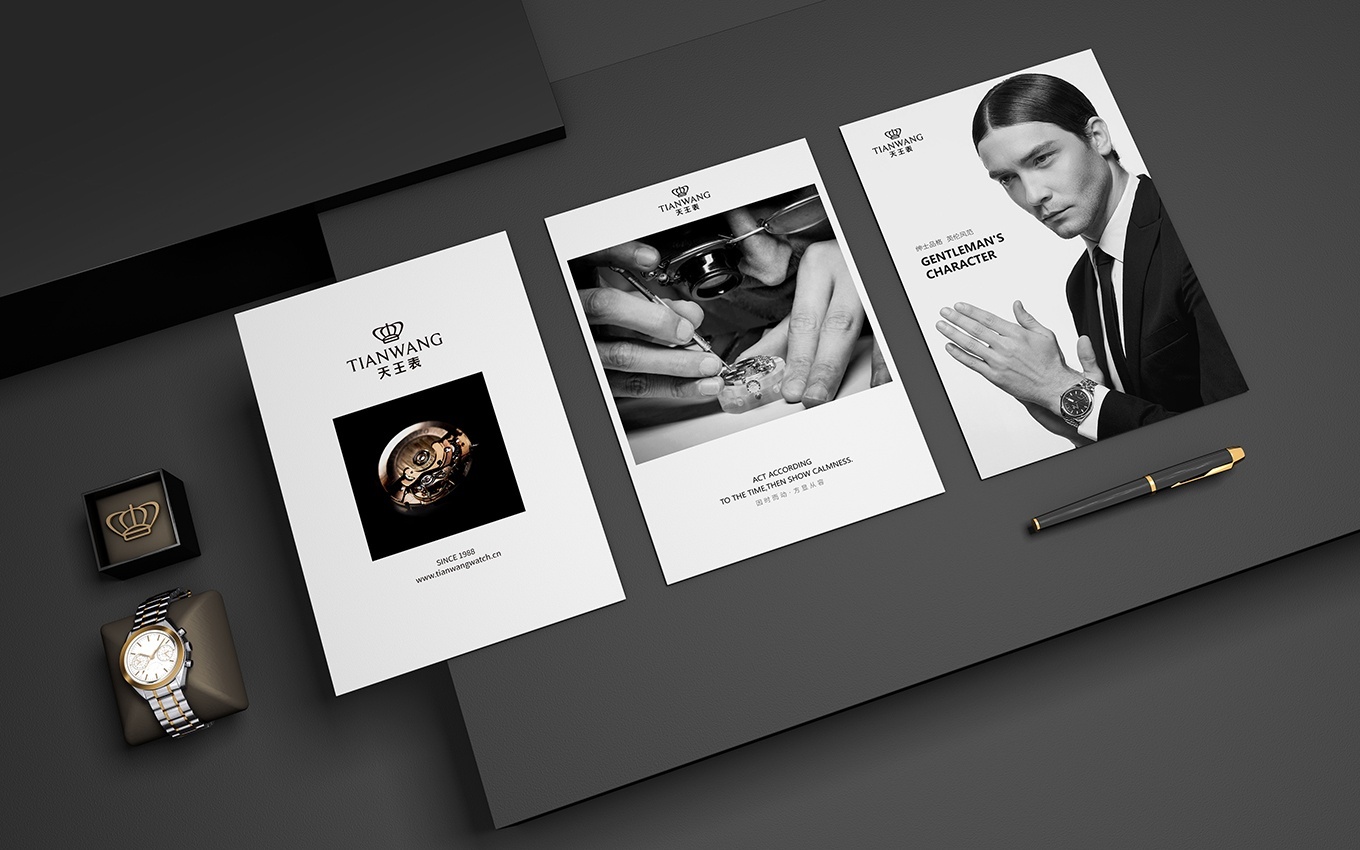
此文是乌鲁木齐品牌策划公司关于设计公司如果推广和营销企业的分享,乌鲁木齐品牌策划公司旨在想让更多的设计公司提高设计业务能力!
 注:配图为UCI设计公司作品
注:配图为UCI设计公司作品
无论你是刚刚推出你的第一个电子商务业务,还是多年来一直在网上销售产品,你都可能听说过购物化.
自2004年推出以来,Shopify已经从一家在线滑雪装备商店发展成为世界上最大的店面管理平台。
如今,已有超过60万商家使用购物化来运营他们的在线商店,这是有充分理由的:Shopify是一个非常棒的电子商务平台。
然而,在本文中,我们不会试图说服你使用Shopify,或者谈论你为什么应该或不应该选择购物化而不是另一个电子商务平台。相反,我们将讨论什么是Shopify,使用购物化时需要记住什么,以及如何使用购物化建立、管理和优化盈利的电子商务商店。
就本文而言,我将假设你已经知道你想卖什么,并且已经弄清楚了你的供应链和你的后端技术细节(如果没有,查看这篇博客文章以获得帮助)。在这里,我们将重点关注如何让您的购物化商店运营并盈利。
听起来像个计划吗?我们开始吧!
什么是Shopify?
首先,在我们深入了解建立和运营购物化商店的细节之前,让我们暂停一下,讨论一下什么是Shopify,您可以从购物化中获得什么,以及该平台的一些优势和劣势。
shopi是一个基于云的电子商务商店平台,大品牌和新企业家都用它来创建在线商店。
正如你可能想象的那样,有了这样的用户基础,Shopify的适应性非常强。您可以在几分钟内建立一个快速购物化商店,或者使用该平台建立一个高度定制的、多国、多语言的平台企业电子商务运营。
为了满足这些不同的需求,Shopify提供了从每月29美元到每月299美元的三种订购级别:
这些层级之间的最大区别是您的商店提供了多少内置功能以及信用卡费率和运费折扣,因此"正确"的层级实际上取决于您和您的业务需求。
购物化的优势
购物化有很多让人喜欢的地方。这是一个设计良好的平台,有一个完善的社区和数百个主题和应用程序,您可以使用它们为您的客户创建真正定制的体验。
事实上,你可能正在阅读这篇文章,因为你已经在购物化上出售了,但这里有几个你可能没有想到的关键功能:
基于云,因此您可以随时随地访问它,您所需要的只是一个互联网连接。
集成顶级营销工具。
包括安全的内置支付处理系统。
基于液体开发语言,可轻松为平台创建定制应用和模板。
拥有强大的支持文档和积极响应的用户社区。
提供出色的客户支持。
这些额外的功能使得购物化特别容易使用和优化,这也是该平台如此成功的部分原因。
购物化的弱点
不幸的是,没有"完美"的电子商务平台Shopify确实有一些限制,你在建立商店时应该知道。
以下是一些需要记住的事情:
购物化很容易使用,但除非你愿意为超高级的Shopify Plus付费(大多数人不愿意),否则你无法定制商店的某些区域,如结账页面。
所有这些令人兴奋的插件通常都有不太令人兴奋的月订阅费,这会大大增加你的商店运营成本。
报告仅限于最底层的计划。
每个账户只能经营一家店铺。这可能会在未来一两年内有所改变。
搜索引擎优化(搜索引擎优化)可能有点挑战性。
销售可下载或虚拟产品可能会很困难。
你不能出售药品、补充剂、赌博相关产品、大麻、酒精或成人内容——尽管这些对于许多电子商务平台来说是相当常见的排除。
一般来说,这些弱点都不是真正的障碍,但重要的是要知道在创建购物化商店时需要克服哪些障碍。
总的来说,Shopify是一个非常强大的购物平台,提供了各种各样的好选择,你可以用它来建立一个高质量的盈利性电子商务企业。我们开始吧!
购物化入门
一旦您注册了购物化并向他们提供了您的基本信息(用户名/密码、地址、域名等),Shopify就会带您进入新的店面管理界面。
这是您执行大部分购物化管理任务的地方,所以花几分钟熟悉一下界面是个好主意。
正如你可能想象的那样,Shopify希望设置过程尽可能简单直接,所以你的主页会立即给你添加产品的选项。继续点击"添加产品",让我们看看您的选项。
向您的购物化商店添加产品
当您将商品添加到您的购物化商店时,Shopify会提供各种字段供您填写。
这些领域中的大多数都是相当简单的产品组织或运输领域。您应该能够使用产品目录中的信息来完成这些字段。
然而,正确的标题、描述和图片会对你的店铺的成败产生巨大的影响。工作之余,我创作和收集服饰,那么我们就用一双保罗德龙(中世纪肩甲)来讨论如何有效地完成这些领域。
标题描述
您的标题和描述字段包含文本,告诉您的潜在客户您的产品是什么,它是如何制造的,它是什么和其他重要信息。
除了告诉你的客户关于你的产品,你的标题和描述也是谷歌用来决定你的产品可以出现在哪些有机搜索中的。
值得注意的是,这些有机搜索结果的位置不同于付费搜索文本广告或谷歌购物广告。
如果你的产品页面在特定的搜索中排名靠前,你可以免费点击你的页面。然而,不能保证你的产品页面会被有机地排列——即使你的产品和某人的搜索完全匹配。
你可以通过优化你的标题和描述来提高你的产品页面出现在相关搜索中的可能性(这被称为"搜索引擎优化"或“SEO”),但即使是优化得最好的页面也可能难以排名——尤其是你的目标关键词有很多竞争。
要调整您的标题、元描述和统一资源定位器在谷歌上的显示方式,请展开"添加产品"页面底部的"搜索引擎列表预览":
使用谷歌购物广告和文字广告,你必须为每次点击付费。然而,如果你愿意花足够的钱,你可以保证你的产品页面会出现在相关的搜索中。
关于什么是"好的"产品标题和描述,有很多争论。但是,大多数专家同意,你的产品页面内容应该迎合你的客户。
所以,如果你要向那些关心产品细节和功能的观众推销一种昂贵的产品,你的描述应该涵盖所有的细节。
另一方面,如果你卖的是廉价的普通商品,你可能希望你的描述简短而甜蜜,以避免压倒性的潜在客户。
形象
在网上购物中,图像质量非常重要!由于人们实际上不能亲自检查你的产品,他们被迫依靠你的图像来做决定。
所以,如果你没有好的图片,你可能也不会有好的销售。
图像优化
理想情况下,最好是从各种角度拍摄高质量、清晰的图像。此外,如果你的产品有你想突出的特殊功能(详细的刺绣、手工雕刻等),最好在你的页面上包括这些功能的具体照片。
另一个让你的图片发挥更大作用的好方法是在实际使用中突出它们。这有助于人们想象拥有或使用产品会是什么样子。
例如,大多数对购买中世纪盔甲感兴趣的人都希望自己看起来像(或者让他们的另一半看起来像)一个英俊、有男子气概的骑士,所以包含这样的图片可能有助于说服人们购买:
经许可使用的图像(来源)。
当你拍摄你的产品时,确保你的照明和配色方案与你想让人们联想到你的产品的感觉相匹配。高科技产品在干净或高对比度的环境中看起来最好,而环保产品在更自然的色调、色调和背景下效果更好。
如果你不喜欢摄影,许多产品都有制造商提供的高质量照片。如果事实并非如此(或者你认为定制照片会卖得更好),你也可以通过购物化合作伙伴找到专业摄影师。
装载速度优化
不幸的是,图像是一把双刃剑。虽然高质量的图片能很好地说服人们购买,但它们也会降低网站的速度。
大多数人只能忍受大约2秒的页面加载时间,所以如果这些漂亮的照片不能快速加载,它们可能会扼杀潜在的销售,而不是帮助他们!
根据一般经验,每个图像应该小于70千字节.
现在,大多数高质量的照片都比70 kb大得多,所以你可能需要为你的产品页面调整它们的大小。最简单的方法是使用照片编辑软件,如GIMP(免费,但很笨重)或Adobe Photoshop(简单,但要花钱)。
要在用计算机修改(图片或照片)中调整照片的大小,请在用计算机修改(图片或照片)中打开图像,然后单击"文件""导出""存储为网格式":
然后,您可以尝试各种设置,直到找到文件大小和图像质量之间的平衡点(颜色编码以匹配它们在下图中的显示位置):
质量。数字越小=图像质量越低,文件越小。
文件格式。文件大小方面,JPEG GIF PNG .但是,同样的规则也适用于图像质量。
优化。选中该框会告诉用计算机修改(图片或照片)优化您的图像以供网使用(减小图像大小)。
颜色。颜色越少=图像质量越低,文件越小。
图像大小。允许您选择图像中的实际像素数。像素越少=图像越小,文件越小。请记住,如果您保存的图像尺寸小于页面上显示的尺寸,您的图像可能会被拉伸以适应页面,从而导致严重的像素化和/或图像失真。
您可以在窗口的左下角看到文件大小。当您更改导出设置时,此数字以及最终图像的预览将会更新。
是的,我正在"存储为网所用"窗口中存储我的"存储为网所用"屏幕截图。我只是忍不住在这里添加了一个"盗梦空间"的时刻…
用计算机修改(图片或照片)的"存储为网格式"工具(其他照片编辑程序也有类似的工具)可以很容易地平衡图像质量和文件大小。这样,你就可以确保你的图片真正销售你的产品,而不影响加载速度。
批量添加产品
如果你只有几个产品要卖,你可以使用上面的界面很容易地逐个添加。然而,许多电子零售商销售数百或数千种产品。
在这种情况下,通常最简单的方法是通过单击左侧栏中的"产品",然后单击"导入"来导入您的产品列表:
这将允许您将产品的电子表格导入到购物化.如果您正确设置了电子表格(Shopify提供了一个。战斗支援车模板来帮助您),Shopify将创建您的所有产品并为您填写相关信息!
选择您的购物化主题
一旦你输入了你所有的产品,是时候把你的商店放在一起了。点击"主页"标签中的"自定义主题"来弹出你的主题选项。
在这里,您可以使用各种选项来自定义您的购物化商店的外观和感觉:
购物化主题是预先设计好的商店设计,您可以使用它来展示您的产品,而不必雇用设计师或开发人员来为您的企业创建一个漂亮的在线商店。
最初,你的商店使用默认的"首次亮相“Shopify主题。它是免费的,而且看起来相当不错:
像许多购物化主题一样,"首次亮相"也有一个浅色版本:
如果像许多电子零售商一样,你想要更独特的外观或不同的选择,你可以点击"探索免费主题",查看各种其他主题(及其变体),供你选择:
如果你愿意在一个主题上投资一点钱,你也可以在购物化主题商店中浏览几十个购物化主题,或者使用主题森林这样的网站来查看数百个潜在的选项。
从购物化主题商店挑选主题的唯一真正好处是,你可以立即添加和定制你的新主题。如果您从外部网站选择主题,您需要下载该主题,然后单击"上传主题"来添加您的新主题。
无论哪种方式,一旦你选择了你的主题,你需要点击"操作发布"来激活一个新的主题。
你大概可以想象,你不能只选择一个主题就推出你的商店。你仍然需要做大量的定制来确保你的主题满足你的需求。
要调整您的主题,请单击"自定义"。这将打开主题编辑器:
在这里,您可以添加部分,删除部分或编辑部分到您的心的内容。
向商店添加非产品页面
购物化自动为每个产品创建单独的页面,但大多数主题也允许您创建其他页面(常见问题页面、联系我们页面、尺寸图表页面等)。
要在您的网站上创建特定页面,请单击左侧边栏中的在线商店页面,然后单击蓝色的"添加页面"按钮,显示以下内容:
就像你的产品标题和描述一样,如果你想让这个页面在谷歌和其他搜索引擎上有机地排名,你需要在写内容的时候把你的目标关键词记在心里。
如果您不希望此页面显示在搜索结果中,请将可见性更改为"隐藏"。此外,如果您希望在页面上有一个联系人表单,请将页面模板更改为page.contact .
创建页面后,您可以在页眉或页脚中链接到该页面,方法是单击左侧边栏中的在线商店导航,然后单击相应的导航菜单。
添加应用程序
虽然基本的购物化选项肯定足以让您的商店开始运营,但您很可能需要一些附加功能来帮助与潜在客户达成交易。
在这种情况下,您可以雇佣开发人员来创建自定义解决方案,或者查看购物化应用商店。
购物化应用程序商店提供了数百个应用程序,您可以将它们添加到您的商店中。例如,如果你想要电子邮件收藏弹出窗口…有一个应用程序。如果你想要一个销售倒计时钟…有一个应用程序可以做到这一点。想提供礼品卡吗?有一个应用程序可以解决这个问题。
总的来说,在你雇佣一个开发者之前,我建议你去看看购物化应用商店。那里有数量惊人的应用程序,你甚至可以在将某个应用程序添加到你的商店之前阅读评论。
然而,要记住的一件事是,这些应用程序是要花钱的。一些开发人员向您收取使用他们应用程序的月费,而其他人只向您收取一次性费用。
记住所有这些,花点时间想想你想在你的网站上添加什么功能,以及这些功能如何有助于你的客户体验,然后找到合适的应用程序是值得的。为了帮助你开始,这里有几个你一定要考虑的应用程序:
1.约特波评论
约特波是一个帮助企业收集和展示用户生成内容(教资会)的非凡工具,因此毫不奇怪,他们的购物化插件非常有价值。
Yotop会适时发送请求评论的电子邮件,并在您的购物化商店的一个小窗口中显示这些评论。你可以完全控制这些评论,你可以使用约特波来增加脸书和推特的流量,并在谷歌购物上显示产品评级。
这还只是免费计划的一部分(额外的费用可以在这里找到更多的功能)。因为即使只有一个好的产品评论也可以导致销售额增加10%,所以有一个方便的应用程序来帮助生成评论是充分利用购物化商店的一个好方法。
2.按类别编辑订单
作为客户,你有多少次下了订单,然后马上意识到自己犯了一个错误?也许你写错了送货地址,订错了尺寸或颜色,或者忘记了促销代码。
世事难料,对吧?
购物化的原生界面本身并不能很好地处理这些变化,所以编辑订单应用程序是商家和他们所服务的客户的救命稻草。只要订单还没有发货,你就可以通过插件修改订单细节。
除了提高您的购物化商店的可用性,编辑订单应用程序还可以帮助您和您的客户降低运输(和退货)成本。尽管该应用每月花费高达19美元,但这些节省让它物有所值。
3.明智的产品推荐
提供产品推荐的网站比不提供的网站卖得多。这是一个简单但不可否认的事实WiserProduct推荐让您能够将产品推荐放在您的购物化商店上,从而让您将这一事实付诸实践。
这个应用程序非常灵活。您可以向用户展示特色产品(通常是追加销售产品)、畅销产品、最近查看的产品、新品或与他们当前正在查看的产品类似的产品。天空是无限的!
因为聪明的产品推荐是免费的,所以没有什么好理由不使用它。
4.持久购物车
有没有访问一个电子商务网站,花一个小时研究产品,找到你想要的东西,在你考虑的时候把它放在你的购物车里,然后回来购买…却发现你的购物车在你不在的时候被清空了?
为了避免让你的顾客经受这种折磨,考虑在你的商店中添加持久购物车应用程序。
持久购物车会自动将客户的购物车链接到他们的帐户,因此如果他们意外点击离开页面,购物车不会被删除。这可以防止他们变得恼火和离开,并通过将所有产品放在购物车中来增加销售额,即使是那些他们可能已经忘记的产品。每月仅需3.99美元,这是一款值得投资的好应用。
5.蒂迪奥实时聊天
比起其他形式的交流,用户更喜欢实时聊天,在你的网站上提供实时聊天可以立即增加转化率。有人在那里,并准备好快速回答订单或产品问题,可以使世界变得不同。
蒂迪奥生活提供了很多像汽车这样的强大功能
ted messages, mobile support and multi-language support that make live chat easy on Shopify.At only $15 a month, Tidio is well worth considering if there’s any chance that your customers will want to contact you before, during or after they make a purchase.
6. Custom Audience Sync with FacebookRetargeting on Facebook Ads—especially with dynamic product ads—is a popular way to reconnect with site visitors and re-engage users who have abandoned their cart. The Custom Audience Sync with Facebook by Audience Push app?can help you automate your retargeting campaigns further by automatically syncing up your customer lists with your custom audiences on Facebook.
Why does this matter?
Well, the Facebook retargeting pixel will capture site activity, but it doesn’t automatically add people to specific custom audiences. If you want to build long-term customer lists and use them for re-targeting, this tool will be your best friend. You can even set up rules for which customers are added to your lists, which allows you to create truly customized retargeting experiences (read more about how to make the most of this feature here).
7. McAfee SecureTo ensure the safety of your customer’s information, you may want to consider adding the?McAfee SECURE app. In addition to securing your customer’s data, this app also allows you to display a secure certification badge on your site to help build trust. This can increase sales directly, because site visitors will feel safer to purchase from you.
A?security seal can increase sales by as much as 42%, so a free app like this can be a great way to improve the performance of your Shopify store.
8. WishList PlusSometimes, users aren’t ready to buy something today. Maybe they don’t have the funds or a need for the product at that exact moment.?But they still want it. Enter?WishList Plus.
This free app allows you to create “smart” wish lists that integrate with your Shopify theme. Users can add items to their wishlist without logging in, giving you incredible insights on site engagement and what products users are interested in.
9. EasyshipMost Shopify merchants are selling physical products. That means they know how frustrating shipping can be, especially when dealing with costs, both on your end and the customer’s end.
As the name implies, Easyship?makes calculating shipping easy. Not only does it give you discounted shipping rates for more than 100 different carriers (including FedEx and UPS), it calculates international taxes and fees so there’s no hidden costs robbing you of profit.
For a free app, Easyship comes with a lot of automated features, too. You can set rules, for example, to have products under 1 lb automatically be sent through UPS, or the “best value for money” carrier. You can also store product information so that all of this is truly automated for you.
10. Pre-Order NowIf you sell products that are frequently out of stock or want to advertise products that are coming down the pipeline, Pre-Order Now is an excellent app to consider.
With Pre-Order Now, you can give customers the option to buy even when your items aren’t currently available. It’s a simple app, but it can save you from losing a lot of potential sales.
11. Product CompareLike Pre-Order Now,?Product Compare?isn’t right for every Shopify store, but if you offer products that people typically want to compare (electronics, apparel, etc), Product Compare is a great app to consider.
If you’ve ever been researching a product and struggled to figure out the difference between two similar models, you know how handy this app will be for your customers. Being able to see the differences of two similar products side by side makes it a lot easier to pick the right item.
Even better, it’s hard to say no to those extra features that only cost a little more when they’re laid out in front of you and they see what they’re missing by not buying the more expensive, more fully featured version. “Fear of missing out” is a powerful motivator and this app can help you use FOMO to increase upsells on your site.
Ultimately, the right apps for your Shopify store will depend on what you’re selling and how you want to run your store, but these 11 apps and many others in the Shopify App Store can make running your shop a much better experience for you and your customers.
Optimizing Your Shopify ThemeOnce you’ve chosen your theme and have your pages and apps in place, it’s time to optimize the look and feel of your Shopify store with the theme editor.
Using the theme editor is more a “show, not tell” process, but this video will teach you everything you need to know to get started editing your template:
As you edit your template, there are a few things you can do to set your store up for success from Day 1. Eliminate DiversionsOne problem many Shopify stores struggle with is too many diversions. Diversions are anything that has the potential to distract your user from reaching their destination.
Contrasting buttons, images, other offers, menus, links, content, pop ups…like cloud cover on launch day, if it leads people off course, it’s a diversion.
For example, take a look at the page below. There are 5 major elements on the page competing for your attention—none of which take a potential customer to view a product—and that’s just above the fold!
What does this business really want people to do? Watch a video? Read a review? Look at the picture? Read the Q&A? Visit their cart?
As it turns out, the answer is “none of the above”.
This page is from a client of ours who—like most e-retailers—simple wanted people to come to their site, look at their products and make a purchase. But, with all the diversions on their site, people were getting lost before they even had a chance to see the client’s products.
To put the focus where it belonged—on the products—we tried eliminating all of the diversions by redesigning the site experience to focus on product call to actions. That way, when people came to the page, they immediately saw Cobra’s products and a simple call to action (CTA) that said “Shop Our Products”.
The new page design increased revenue (not just conversions) by 69.2%!
We’ve seen similar results with many of our ecommerce clients. For example, we often test to see how removing different elements and offers from a client’s homepage affects their conversion rates (this is called “existence testing”).
Existence testing is one of the easiest, fastest ways to discover what is distracting from conversions and what is helping conversions.
If you remove something from your page and conversion rates go down, that item is helpful to the conversion process. If you remove something and conversion rates go up…bingo! You found a distraction.
The GIF below shows you how this works. Essentially, you just remove a page element and then see which version of the page performs better. Easy enough, right?
For this particular client, we tested to see how removing 8 different elements from their home page would affect their revenue. As it turned out, 6 of the 8 elements were actually decreasing their revenue!
By eliminating those elements during our test, their revenue-per-visit (RPV) increased by 59%.
Why? Well, once again, we discovered things that were diversions to the user experience (as it turns out, the diversions were other products!).
Unfortunately, you can only do existence testing?after your site is up and running. However, even without testing your store, minimizing diversions is almost always a good way to get more out of your theme.
Simply take a step back from your site and ask yourself, “What do I want people to do when they visit this page?”
If you have page elements that are distracting or diverting people from doing what you want them to on your site, you need to make a change.
Reduce AnxietyEver have that moment when you’re driving a car and you suddenly get hit by a huge gust of wind? What happens to your heart rate?
Whether you’re in the driver’s seat or an office chair, anxiety is never a good thing. Unfortunately, when it comes to your site, people are already in a state of high alert. Anything that adds to their stress level (clicking on something that isn’t clickable, feeling confused or swindled) may lead to you losing a customer.
As a quick example, one of our ecommerce clients had a mobile page that forced users to scroll all the the way back up to the top of the page to make a purchase.
So, we decided to try a floating “Buy Now” button that people could use to quickly buy the item once they’d read all about it:
Yes, scrolling to the top of the page seems like a relatively small inconvenience, but eliminating this source of anxiety improved the conversion rate by 6.7%.
Even more importantly, it increased the RPV by $1.54.
Given the client’s traffic volume, this was a huge win!
As you can probably imagine, the less confusion, alarm, frustration and work your site creates for users, the more likely they are to buy.
When you get right down to it, making a purchase should be a seamless, almost brainless process. If a potential customer ever stops to think, “Wait, what?” on their buyer journey, you’ve got a real problem.
To identify potential anxiety-inducing elements on your site or page, try going through the whole purchasing process on your site (better yet, have someone else do it and describe their experience to you). Watch for situations or content that force you to think. Odds are, you’ve just discovered a way to improve your theme.
Make Things SimpleNothing frustrates potential customers more than having to fight with your site to find the products they want to buy. To avoid this, it’s a good idea to create “collections” of similar items.
For example, I might have an “armor” collection, a “swords” collection and “clearance” collection in my hypothetical costuming store. I could then use those collections in a template to create focused pages for customers interested in those items.
To create collections, click Products > Collections in the left-hand sidebar. Once you’ve created your collections, you can assign products to them on the product set-up page.
Offer DiscountsAny good retailer knows that discounts sell product. Fortunately, it’s easy to offer discounts with Shopify. Just click “Discounts” in the left-hand sidebar and then click the blue “Create discount” button to reach the following page:
Here, you can choose the discount code, type, duration, requirements and a variety of other specifics about your discount code. Simply choose the options that make sense for your business and Shopify will set it all up for you!
As you put together your discounts, remember, purchase decisions are often not made based on the actual discount you give—they’re based on how your discount is perceived. So, even if the final price is the same, if your potential customers?believe that your offer is better, they’ll pick you over the competition.
Approaching Discounts the Right WayTo get the most out of your discounts, all you have to do is remember one simple truth: people don’t like math.
Sure, your customers may be bargain hunters, but if you phrase your deal the right way, many people won’t bother to do the actual math—they’ll just assume you’re selling things for cheaper than the other guys.
Take the?“Rule of 100”, for example.
This rule states that, for products with a price under $100, displaying the discount in terms of a percentage (a relative metric) is more powerful because the percentage will be a larger number than the actual dollars saved with the discount.
If a product costs $10, a $1 discount represents 10% off the price. Getting 10% off may be perceived as a larger discount than the $1 savings (since 10 is bigger than 1).
On the other hand, for products that cost over $100, showing the discount in terms of dollars off the original price (an absolute metric) is more powerful since the dollar amount will be a larger number than the percentage of actual discount.
The Power of DiscountsNow, this isn’t all just a nice theory. One of our clients sells high-end parts and accessories for outdoor, all-terrain vehicles. Most of their products have a high price point (over $100), so their customers are sensitive to sales and promotions.
However, since this client’s margins are fairly slim (typical for this industry), they can’t really afford to do the sorts of mega-sales you see stores like Hobby Lobby or Wal-Mart offer. But, they do offer the regular wholesale discount a manufacturer passes on to them on every product (around 10% on most items).
With a fairly fixed discount price like this, we knew we had to make every deal look as compelling as possible.
Originally, the client had been using a basic “percent off” model to advertise their discounts. So, if a part cost $300 and the discount was 10% ($30), the page said “You Save 10%”. If a part cost $3,000 and the discount was 10% ($300), the page still said “You Save 10%”. Unfortunately, this meant that while the actual savings could vary significantly, the perceived savings were identical.
Taking all of that into account, we decided to give the “Rule of 100” a shot.
Instead of listing the percent off for products over $100, we decided to list the actual discount. That way, potential customers could easily see exactly how much they were saving and how good of a deal they were getting.
For this test, tested the original “percentage off the original price” model…
…against a percentage discount model (since almost all products cost over $100):
After testing 40,000 visitors, the “$ off” discount increased cart visits and sales by 12% and produced $15,000 of additional sales in just two weeks!
We didn’t offer crazy deals. We didn’t cut into their profit margin. All we did was take their existing discounts and offer them in a more compelling way…and you can, too!
Setting Up Payment ProcessingIf you’re going to sell products in your Shopify store, you probably want to get paid, right?
Fortunately, one of the perks of using Shopify is built-in credit card processing. You don’t actually have to do anything to process payments, although Shopify does charge you a minimum of 2.9% plus $0.30 for every transaction (rates are better with higher-tier plans).
This is great, because most retail businesses typically have to work out a credit card processing on their own. If you’re a small independent business, trying to secure a favorable contract with credit card companies is difficult, which is why most small business use a third-party processor like Authorize.net or Square.
With Shopify, you pay about the same processing premium that most third-party processors charge and you don’t have to pay setup or maintenance fees.
All of that is well and good, but if you actually want the money to end up in your bank account, you’ll need to give Shopify your bank account information.
To do this, click Settings (at the bottom of the left-hand sidebar) and click “Payment providers”:
On the next page, click the blue “Complete account setup” button to enter your bank account information.
If you’re already using another card processing provider like Amazon Pay, PayPal or an alternative payment method like BitPay or Alipay Global, you can set that up here as well.
Customizing Your Shopify DomainAt this point, you could technically?launch your Shopify store and start selling products. However, if you really want to inspire confidence in your potential customers, you should strongly consider switching to a personalized domain name.
When you initially create a Shopify store, Shopify builds your store under the Shopify domain name. In the case of my costuming store, Shopify took my business name “Ingenius Designs” and put my store under the URL:?ingenius-design.myshopify.com.
Unfortunately, nothing screams, “I just built my first Shopify store!” like a Shopify URL.
To get your own independent URL, click on “Add domain” on the home page of your store interface (or click Online Store > Domains in the left-hand sidebar). This will give you the option to either buy a domain from Shopify (for $14.99/month) or buy your own domain from a site like GoDaddy, set up hosting via a site like BlueHost and then connect that domain to Shopify.
The second option is a lot cheaper in the long run, but it does take a little extra work. Either way, the increased clout that comes with an independent domain name is well worth the investment.
Setting Up Email ResponsesIn addition to your custom domain name, another good way to inspire confidence in your customers is through clear email communication.
To make this easy for you, Shopify offers a wide range of email templates you can send out to customers when they reach certain points in their shopping or purchasing journey.
To access and/or enable these emails, click Settings at the bottom of the left-hand sidebar and then click “Notifications”:
Here, you can see a list of all the various emails or SMS messages Shopify is sending out on your behalf.
To see what the actual email will look like, you can either click “Customize” and arrow over to the relevant email or you can send a test email to yourself by clicking “Send test notification”.
You can also edit the emails or text messages by clicking on the notification name:
Unfortunately, Shopify’s editing interface only shows the actual HTML of your email/message, so you’ll have to bounce back and forth between the editing and preview interfaces to see how your changes affect your email.
If you’re not familiar with HTML, don’t worry, it’s fairly self-explanatory. At a minimum, you should be able to search for the text you want to edit and—if you don’t change anything but the actual text—you shouldn’t have to worry about affecting the format of the email.
In addition to client emails, you can also set up desktop notifications for yourself or alerts that go to third-party fulfillment providers when?a new order comes in.
Shopify’s notifications options are fairly straightforward, but if you get stumped, you can either ask questions here in the comments or check out Shopify’s official templates documentation.
ConclusionThat’s it! At this point, you are well on your way to launching and running a successful Shopify store.
That being said, putting together a beautiful, functional store is just the beginning. To really get the most out of your ecommerce business, you’ll need to market your store, optimize it for maximum conversions and sales and much, much more.
But don’t worry, we’ll be with you every step of the way.
When you’re ready to take things to the next level, either let me know here or check out the links above. We want to make sure that your Shopify store is everything you hope it will be.
How do you feel about Shopify? What has your experience with this ecommerce platform been like? Anything you’d add to this article? Leave your thoughts in the comments!
Aden AndrusAuthor
Over his career, Aden has developed and marketed millions of dollars of successful products. He lays awake at nights figuring out new marketing tactics and is constantly upping Disruptive's internal marketing game. He loves to write, dance and destroy computer monitors in full medieval armor.
 注:配图为UCI设计公司作品
注:配图为UCI设计公司作品
通过乌鲁木齐品牌策划公司的精彩分享,设计师更轻松快捷地掌握乌鲁木齐品牌策划公司分享的营销与设计知识,帮助北京vi设计公司更好地服务好客户 。


总监微信咨询 舒先生

业务咨询 舒先生

业务咨询 付小姐